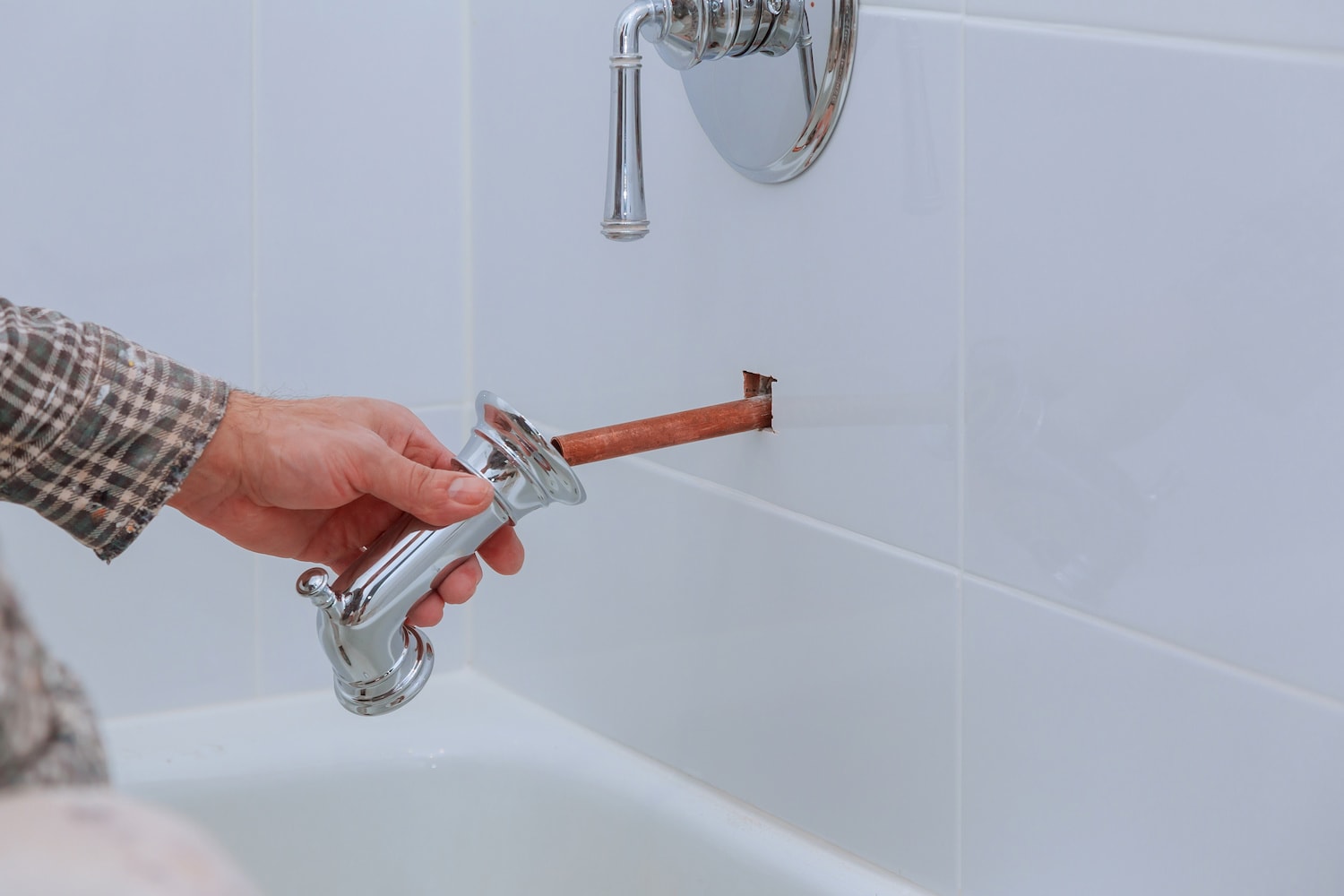Tools and Materials
:max_bytes(150000):strip_icc()/how-to-replace-a-bathtub-faucet-5210836-10-6825223c1e75442187d5ab09690510d4.jpg)
Replacing a bathtub faucet is a relatively simple DIY project, but you’ll need the right tools and materials to get the job done efficiently and safely. Here’s a comprehensive list of what you’ll need.
Tools and Materials Needed
| Item | Quantity | Description |
|---|---|---|
| Adjustable Wrench | 1 | Used to loosen and tighten nuts and bolts. |
| Channel-Lock Pliers | 1 | Useful for gripping and turning pipes or fittings. |
| Pipe Wrench | 1 | For gripping and turning larger pipes or fittings. |
| Plumber’s Tape | 1 Roll | Used to seal pipe threads and prevent leaks. |
| Silicone Sealant | 1 Tube | Used to seal around the faucet base and prevent leaks. |
| New Faucet | 1 | The new faucet you want to install. |
| Replacement Supply Lines | 2 | These are the flexible hoses that connect the faucet to the water supply. |
| Safety Glasses | 1 Pair | Protect your eyes from debris. |
| Work Gloves | 1 Pair | Protect your hands from cuts and scratches. |
| Bucket | 1 | For catching water when you turn off the water supply. |
| Towels | Several | For cleaning up spills and wiping down surfaces. |
Installing the New Faucet: Replacing Bathroom Faucet In The Tub

With the old faucet removed and the tub spout prepped, you’re ready to install the new faucet. This process involves attaching the new faucet to the tub spout, connecting the water lines, and testing for leaks.
Attaching the Faucet to the Tub Spout
Attaching the new faucet to the tub spout is a straightforward process. Here’s how:
1. Align the faucet with the tub spout. The spout should align perfectly with the faucet’s base.
2. Slide the faucet onto the spout. Make sure it fits snugly and is aligned properly.
3. Secure the mounting nut. The mounting nut is typically located on the underside of the faucet. Tighten the nut securely, ensuring that the faucet is firmly attached to the spout.
Connecting the Water Lines
Connecting the water lines is crucial for ensuring proper water flow to the new faucet. Here’s how:
1. Connect the hot and cold water lines. The hot and cold water lines are typically color-coded. Red is for hot water, and blue is for cold water. Make sure to connect the lines to the correct inlets on the faucet.
2. Tighten the connections. Use a wrench to tighten the connections securely. Make sure they are tight enough to prevent leaks, but don’t overtighten, as this could damage the lines or faucet.
Testing for Leaks
After installing the new faucet, it’s essential to test for leaks and ensure proper water flow. Here’s how:
1. Turn on the water supply. Turn on the main water valve to the bathroom.
2. Check for leaks. Look for any leaks around the connections between the faucet and the tub spout, and between the water lines and the faucet.
3. Test the water flow. Turn on the hot and cold water valves to ensure that the water flows properly.
4. Adjust the flow control. Some faucets have flow control mechanisms that allow you to adjust the water pressure.
5. Check for any drips. After testing the faucet, check for any drips from the spout or the connections.
Finishing Touches
After successfully installing your new bathroom faucet, it’s crucial to complete the installation process with meticulous care. Taking the time for finishing touches will ensure a clean, functional, and long-lasting result.
Cleaning Up, Replacing bathroom faucet in the tub
A clean workspace is essential after any home improvement project. After installing your new faucet, it’s important to clean up any debris or water spills. This will prevent potential hazards and leave your bathroom looking its best.
- Wipe down the tub and surrounding area with a damp cloth to remove any water droplets, soap residue, or debris from the installation process.
- Use a dry cloth to thoroughly dry all surfaces, preventing water spots and ensuring a clean finish.
- Dispose of all packaging materials and any leftover debris properly, ensuring a clean and organized workspace.
Disposing of the Old Faucet
Properly disposing of the old faucet is crucial for environmental responsibility and safety.
- Before discarding the old faucet, disconnect it from the water supply lines. This prevents any accidental water leaks or damage.
- Check if your local municipality has specific guidelines for disposing of old plumbing fixtures. Some communities may have designated recycling centers for metal components or offer curbside pickup for bulky items.
- If your local area does not have a specific program, consider contacting a local scrap metal recycling facility. They can often accept old faucets for recycling.
Maintaining Your New Faucet
Proper maintenance will extend the lifespan of your new faucet and ensure its smooth operation for years to come.
- Clean your faucet regularly with a soft cloth and mild soap. Avoid harsh chemicals or abrasive cleaners, as they can damage the finish.
- To prevent mineral buildup, wipe down the faucet after each use, especially if you have hard water. You can also use a vinegar-based solution to remove mineral deposits.
- Periodically check for any leaks or loose components. Tighten any loose screws or nuts, and replace worn-out parts as needed.
